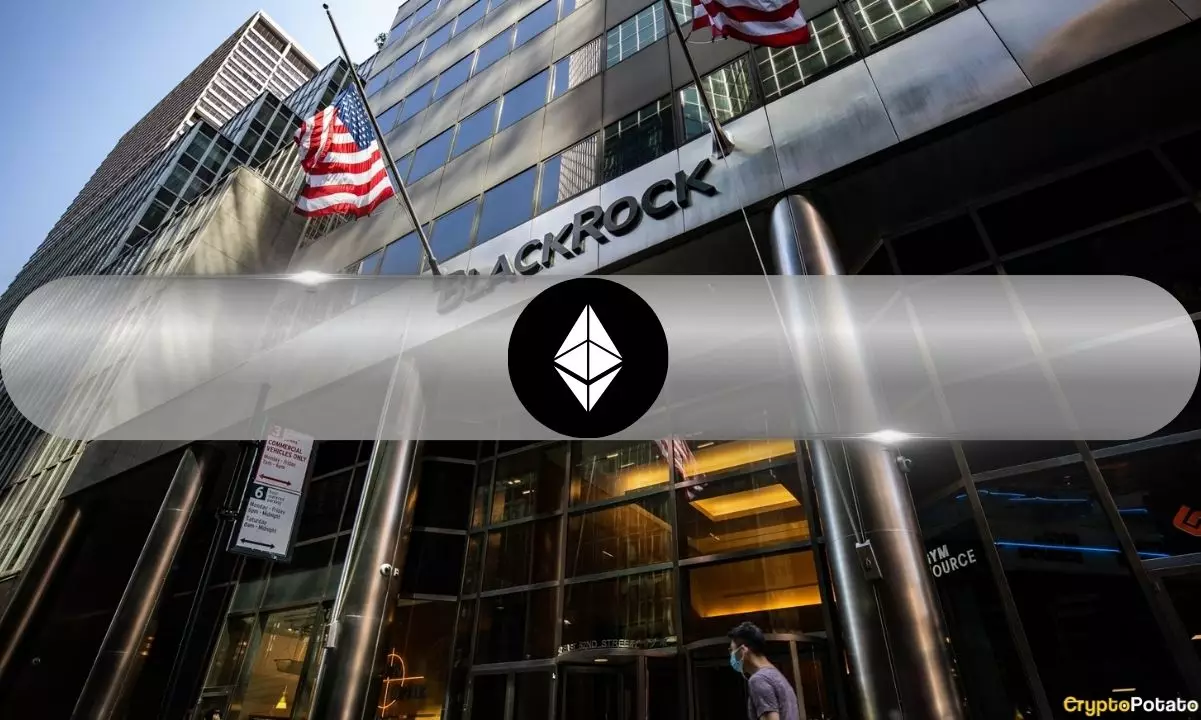In an era where traditional finance intersects with expanding digital frontiers, the announcement from BlackRock regarding the tokenization of its $150 billion Treasury Trust Fund represents a seismic shift in investment paradigms. This move is not merely about integrating with blockchain technology; it encapsulates a long-overdue modernization of how assets are managed, traded, and valued. As Ethereum solidifies its standing as a premier platform for such tokenization, it signifies the dawn of a new investment era that caters to both institutional and retail investors alike. BlackRock, a titan in the financial world, has recognized that the adoption of blockchain technologies is not just optional—it is imperative for sustained growth and efficiency.
BlackRock’s DLT Shares: The Future of Asset Management
BlackRock’s introduction of “DLT Shares” is a shrewd maneuver that encapsulates their ambition to effectively tokenize real-world assets. This asset class facilitates ownership tracking of traditionally illiquid assets, leveraging Ethereum’s capabilities to provide unprecedented transparency and liquidity. As Eric Connor aptly articulated, this signifies the largest flow of real-world assets into Ethereum to date. By utilizing blockchain, BlackRock is optimizing its $150 billion money market fund designed to bring low-risk returns to investors. The efficiency gains from this move cannot be understated, as transactions that typically require extensive periods for settlement could be executed in seconds, thus driving a paradigm shift in investor expectations.
Ethereum’s Role as an Institutional Standard
Ethereum is not just another blockchain; it has emerged as the de facto infrastructure for real-world asset tokenization, commanding a market dominance of 56%. The fact that BlackRock has increasingly turned to Ethereum for its token initiatives underscores an essential truth: institutional finance is beginning to align with digital assets because blockchain offers solutions to longstanding inefficiencies. According to reports, BlackRock’s previous venture, the USD Institutional Digital Liquidity Fund (BUIDL), has allocated a staggering 93% of its assets on Ethereum. This isn’t mere speculation; it’s a palpable vote of confidence in Ethereum’s capabilities and future.
Market Dynamics and Price Potential
Despite the overwhelmingly positive developments surrounding Ethereum, the cryptocurrency has remained trapped in bearish sentiment, with prices hanging around lows not seen since early 2023. Many investors, particularly retail, may feel disheartened by ETH’s performance; it is trading at about 63% below its all-time highs. Yet, the fundamentals of the ecosystem speak to a different narrative, one rife with potential for recovery and growth. Analysts argue that a significant institutional buy-in, evidenced by BlackRock’s recent activities, can act as a catalyst to propel ETH prices dramatically. The perception of undervaluation in Ethereum is prevalent among crypto advocates, and industry giants are starting to take notice of this appealing proposition.
The Institutional Embrace of Ethereum and Future Implications
The unfolding events reveal an important trend: successful institutions will increasingly incorporate blockchain technologies into their toolkit. With BlackRock scooping up significant amounts of ETH ($162 million over recent trading days), we are observing an institutional embrace that is poised to influence the market dramatically. BlackRock’s CEO Larry Fink has highlighted how tokenization can transform real market dynamics—freeing up billions trapped in inefficient transaction mechanisms that can now be reinvested more readily. This confidence from leading institutions reinforces the notion that Ethereum is not merely surviving; it is flourishing.
A Turning Point for Investors
As the tokens of these funds begin circulating on the Ethereum blockchain, they open the door for new investment opportunities. Investors who once viewed cryptocurrency as speculative may find themselves enticed by the prospects of stable tokens backed by high-quality assets like U.S. Treasuries. Greater participation from traditional financial institutions means enhanced market liquidity and broader access to digital assets for the average investor, which should define the next chapter of wealth creation in a rapidly evolving financial landscape. As Ethereum continues to develop its infrastructure and ecosystem, the ramifications of these advancements will redefine what it means to invest in a blockchain world. The convergence of traditional finance and decentralized technology stands as a crucial turning point that promises to reshape the global economy for years to come.

















Leave a Reply